Despite being one of the world’s most successful ferry companies, the mundanity of Stena Line’s modern on board offering has always been puzzling, almost as if the company were determined to portray a ferry crossing as something everyday, nothing to get excited about. The food has never been too much to write home about and the decor from ship to ship was broadly consistent: there were the myriad different Globetrotter’s, dear old Spike’s Sports Bar, Rudi’s Diner or, latterly, the dreaded Food City. Perhaps this familiarity was meant to be reassuring. For a company with such a wide variety of operations I have always found it rather constraining and the chosen decor somewhat depressing; descriptions of floating motorway service stations have not been far from the mark.

I will not, cannot, argue though against Stena’s success. There was once a memorable, possibly apocriphal, quote from Gothenburg that the company just couldn’t find enough things to do with its money. In the ferry part of the Stena sphere, in addition to operating ships, that money was made from building and rebuilding, buying and selling, predicting how the market was going to grow and ordering the right ships at just the right time – when prices were cheap, yards were desperate or demand about to explode.
Yet I had wondered if no one in Gothenburg in more recent times has ever really understood anything other than the freight market, that to many passengers even the shortest ferry crossing IS extraordinary and perhaps the experience deserves to be a little exceptional.

Despite being founded on a philosophy little short of ‘pile em high and sell em cheap’ earlier Stena ships were in many ways very beautiful indeed: the Stena Danica of 1969 ranks as perhaps the most beautiful ever Swedish ferry, inside and out. The Yugoslav quartet of the early 1970s were rather striking when one got past the flower power touches; the ‘Danica’ and ‘Jutlandica’ of 1983 as built actually were rather lovely and even the potentially soul-lessly huge Kiel ships of 1987/88 had endearing touches.

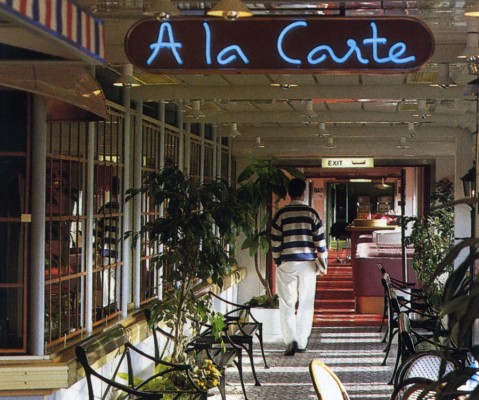
In the 1990s however what we can call the ‘Stena Blandica’ look took over. Wipe clean surfaces and slightly cheap looking shiny laminate flooring predominated. Worst of all, the desire to apply this look to every ship, regardless of service, took over and so, for example, one found on the overnight ships ‘Germanica’ and ‘Scandinavica’ where once there had been a series of delightful inter-connected a la carte restaurants a dreary Food City was installed instead. Passenger numbers have fallen dramatically from their peak: social and economic factors outside Stena’s control doubtless accounts for much of this yet one still wonders if Stena needlessly abandoned some of the non-transport market it once had.
The Food City name has now been discarded; the standardisation of onboard names and styles remains however. Yet, in recent times, there has been a marked uptick: starting with the Irish Sea fleet, suddenly Stena has endeavoured to decorate its ships in a most Scando-trendy and sympathetic style. The 2008 and 2009 refits of the Stenas Voyager, Caledonia and Nordica were perhaps the first hints of this movement, whilst the rebuild of the newly acquired Stena Navigator was the first really coherent evidence.


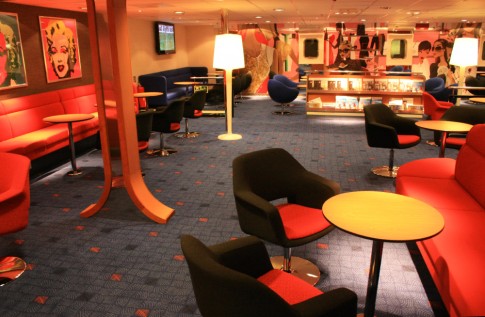


Which brings us, at last, to the Stena Hollandica, newly built for the Harwich-Hook of Holland route. Here, for once cast free from the constraints of converting existing tonnage, Stena’s house designers, Figura, had the chance to show just what they could achieve. A first glance of the ship’s guide is all too familiar: here is your C-View Bar, there your Taste Buffet and over there a Riva Bar. Yet despite the familiarity somehow the whole coheres in a quite striking way. Carpets, seating, some bulkhead finishes and even layouts are replicated from other recent ships yet now it all makes sense and is often quite beautiful. Some unpleasant finishes remain such as a couple of the once uniform shiny metallic ceilings; the outside decks have, with more work still to do, thus far failed to remotely replicate the progressiveness of those on the ‘Navigator’. Yet these are quibbles, for in the ‘Hollandica’ Stena have introduced probably the newbuild ferry of 2010. One thing which is striking is the choice of a wood-effect laminate for many of the bulkheads in the corridors and arcades. This is all a mirage of course – doubtless there is not a single grain of wood in any of the wall panelling – and one could choose to take them to task for choosing effect over reality. However the effect is to make the ship feel distinctly warm in a quite endearingly old-fashioned way, perfect for an overnight ship.
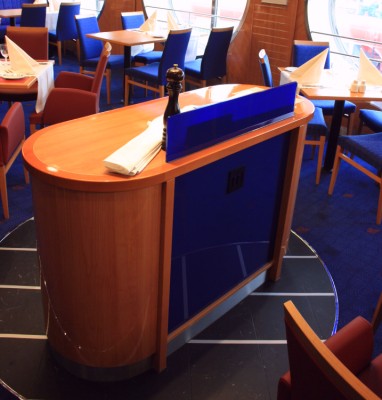
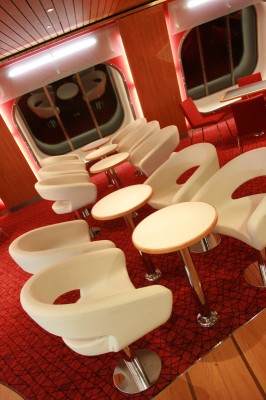

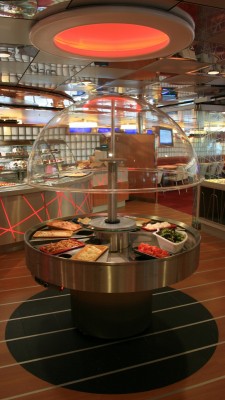


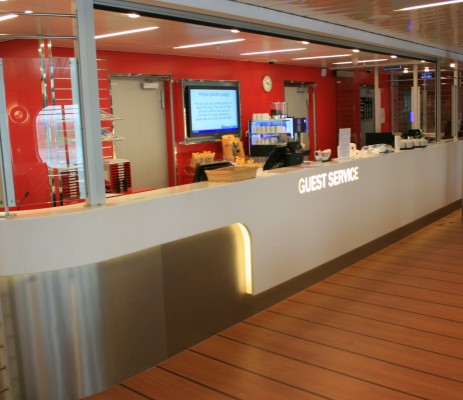

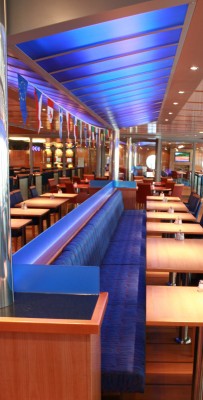

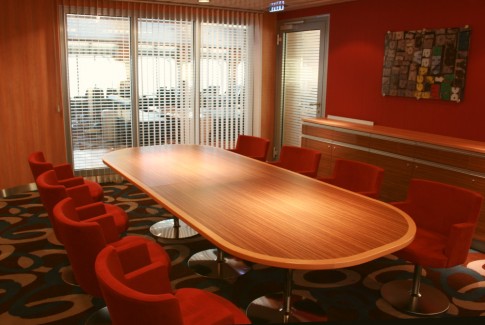




Stena Line has since the loss of Duty Free focussed on freight – and the ‘Hollandica’s vast vehicle decks show that for good reason this will continue to be the case. But the passenger side did seem to have become a little neglected: the agonised debate on Landgangen as to why the Stena-dominated Swedish West Coast can no longer support “cruise ferries” whereas on the East Coast ex-Stockholm mini cruises continue to thrive offers a few pointers in what could be perceived to have gone wrong. ‘Sterile’ and ‘easy to clean’ are two descriptions from that discussion which apply certainly to the current state of the Stena Danica, rebuilt in 2003 along much the same lines as Fishguard’s Stena Europe. The ‘Danica’, on the company’s premier route, deserves more than any other ship to be rescued from its sad ‘Blandica’ era and given just a little hint of the ‘Hollandica’ treatment. And maybe, just maybe, Stena will discover that people in the company’s home town will once more feel the urge to head out to sea – and that beautiful ships and profitable services are not as mutually exclusive as they perhaps had come to believe.



Stena always had some excellent ferries, could say they operate the best ships on the North Sea. The addition of their two new super ferries on the North Sea has been great but its still questionable whether they are able to use them to their full capacity, especially in the current economic climate